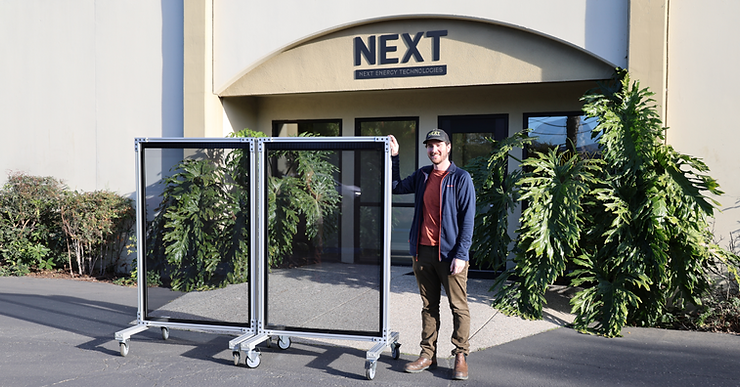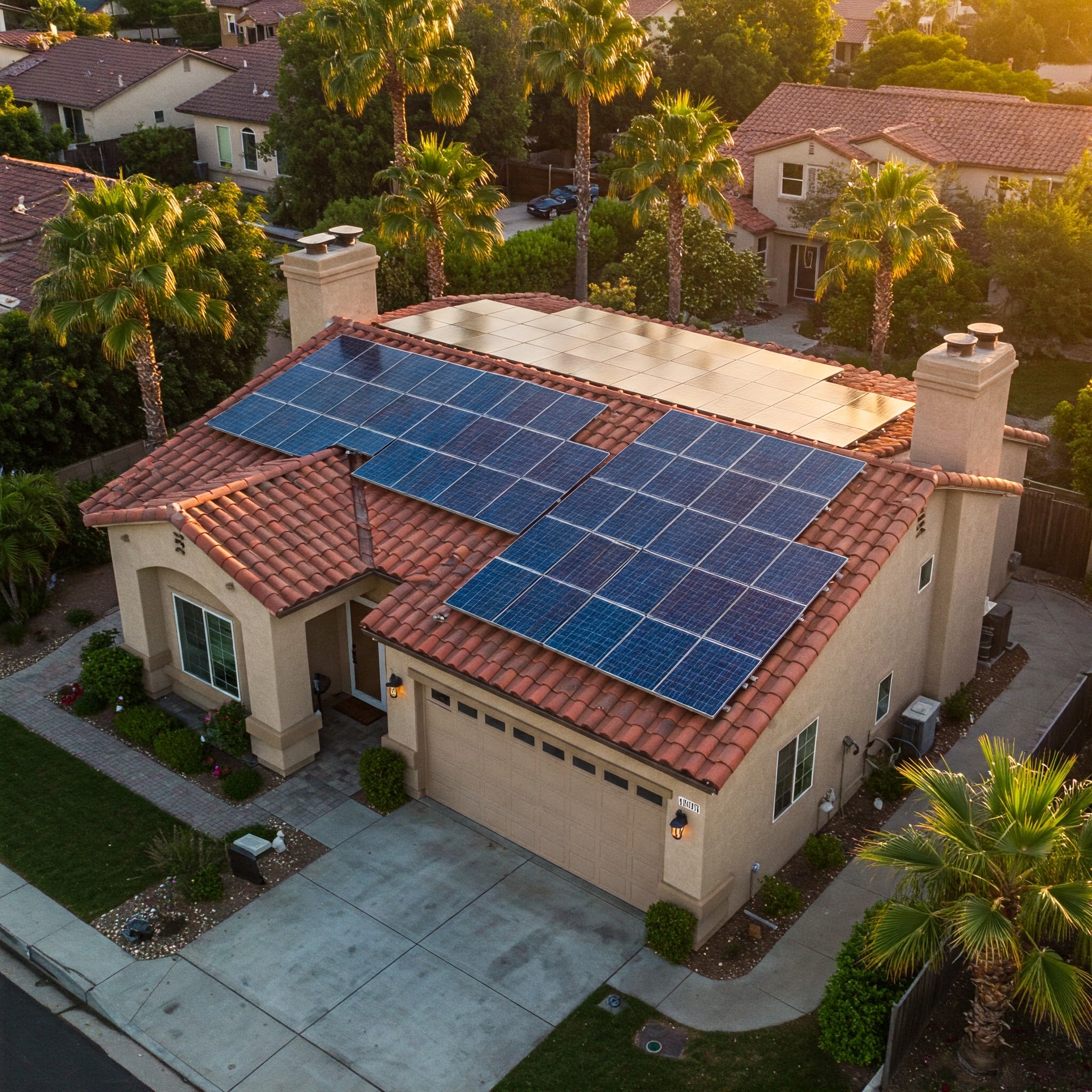Next Energy’s Transparent Solar Windows Illuminate the Future of Sustainable Architecture
California – Next Energy Technologies, a California-based organic photovoltaic (OPV) start-up, has taken a groundbreaking leap in sustainable innovation by unveiling what it claims to be the world’s largest fully transparent OPV window. Measuring 101.6 cm by 152.4 cm (approximately 3.3 feet by 4.9 feet), this commercial milestone is set to revolutionize how buildings interact with sunlight, merging aesthetic design with clean energy generation. As the world increasingly seeks solutions for reducing carbon footprints, Next Energy’s transparent solar windows offer a compelling vision of energy-producing facades that blend seamlessly with modern architectural styles.
Transforming Architectural Aesthetics with Solar Power
The integration of power-generating technology into everyday building materials has long been a dream for architects and sustainability advocates. With these new transparent solar windows, that dream is quickly becoming reality. Traditionally, solar panels have been bulky additions to buildings, often clashing with design aesthetics. In contrast, Next Energy’s product leverages a nearly invisible organic photovoltaic layer that allows natural light to pass through while harnessing ultraviolet (UV) and infrared (IR) light for electricity production. This technology transforms standard glass into a dual-purpose material—preserving the appearance and clarity expected in windows while actively contributing to a building’s energy needs.
Andy Cohen, Co-Chairman of Gensler, one of the world’s leading architecture and design firms, remarked that this innovation is a “game changer” in achieving Net Zero building standards. The aesthetic integration of these solar windows means that energy production no longer has to be sacrificed for design, opening up new creative possibilities for architects around the globe.
The Technology Behind Transparent Solar Windows
At the heart of this innovation lies organic photovoltaic (OPV) technology. Unlike traditional silicon-based solar panels, OPVs employ carbon-based semiconductors capable of capturing a broader spectrum of light. This unique property allows the windows to generate electricity from light outside the visible spectrum, specifically harnessing UV and IR radiation, while still maintaining a high level of transparency. The OPV layer is carefully integrated into the glass substrate through a series of advanced processes—coating, laser-scribing, and laminating—that ensure the final product meets rigorous standards of efficiency and durability.
Developed on a pilot production line, the laminated structure of the window includes not only the transparent OPV layer but also essential components such as edge seals, busbars, a junction box, and a protective cover glass. This comprehensive design ensures that the window functions effectively as an energy generator without compromising on performance or longevity.
Manufacturing Process and Scalability
A significant factor contributing to the promise of these transparent solar windows is Next Energy’s use of automated slot-die coating technology. This method is pivotal in depositing the OPV coating onto glass substrates uniformly and efficiently. The process involves a precise application of the OPV solution through a narrow slot onto the glass, followed by laser-scribing to define active regions and subsequent lamination to protect the sensitive materials. This seamless in-line manufacturing process is designed to be easily integrated into existing glass production lines, allowing manufacturers to adopt the technology without substantial retooling or investment.
Scaling production from smaller prototypes to the current 40” x 60” format represents a major commercial milestone. The larger format not only increases the potential energy output per unit but also moves the technology closer to full-scale deployment in building facades. Earlier prototypes, which measured 68 cm by 89 cm, were already capable of offsetting 20 to 25 percent of a typical commercial building’s energy load. With the expanded size, the potential impact on energy efficiency and building sustainability is even greater.
Impact on the Building Industry and Energy Efficiency
The introduction of transparent, power-generating solar windows could transform urban landscapes and the way we think about building design. By converting conventional windows into renewable energy sources, commercial and residential buildings can actively contribute to reducing reliance on external power grids. This integration is particularly significant for high-rise and office buildings, where large glass facades are prevalent.
The dual functionality of these windows not only helps generate electricity but also aids in reducing the thermal load on buildings. By absorbing and converting infrared light, the windows can mitigate heat gain, thereby decreasing the demand for air conditioning and reducing overall HVAC energy consumption. This dual benefit enhances building energy performance, contributes to lowering operating costs, and supports broader sustainability goals.
Challenges and Road Ahead
Despite the promising outlook, several challenges must be addressed before transparent solar windows can be widely adopted. One of the key challenges is ensuring the long-term durability and stability of the OPV materials under varying environmental conditions. While the technology has demonstrated impressive laboratory results, real-world applications require extensive testing to confirm that performance remains consistent over time.
Cost remains another consideration. Although OPV technology utilizes low-cost, earth-abundant materials and eliminates the use of heavy metals and toxic byproducts, scaling production to meet commercial demand must be economically viable. The automated slot-die coating process is designed to keep manufacturing costs low, but further innovation and market competition will be essential to achieve widespread adoption.
Furthermore, integration into existing building designs presents a dual challenge of technical compatibility and aesthetic acceptance. Architects and builders will need to work closely with manufacturers to optimize window performance while ensuring that the design remains visually appealing. As the technology matures, regulatory standards and performance benchmarks will need to be developed to ensure safety and reliability across diverse applications.
Broader Implications for Sustainable Urban Development
The implications of transparent solar window technology extend far beyond individual buildings. As cities worldwide grapple with the demands of growing populations and the need to reduce carbon emissions, innovations like these offer a pathway to more sustainable urban environments. Energy-generating facades could become a standard feature in future construction, contributing to self-sustaining buildings that generate a significant portion of their own energy.
In addition, the widespread adoption of such technology could spur further advancements in renewable energy integration and smart building management systems. By combining energy generation with advanced architectural design, cities can become more resilient, reducing the strain on centralized power grids and lowering overall greenhouse gas emissions.
Conclusion
Next Energy Technologies’ unveiling of the world’s largest transparent power-generating solar window marks a significant milestone in the convergence of renewable energy and modern architecture. By transforming conventional glass into a dynamic, energy-producing component, this innovation not only enhances building aesthetics but also paves the way for a more sustainable and resilient future. While challenges related to durability, cost, and integration remain, the potential benefits of transparent solar windows—from reduced energy consumption to innovative design possibilities—underscore the transformative impact of this technology. As research continues and production scales up, these solar windows could soon redefine urban landscapes, contributing to a cleaner, greener built environment for generations to come.



